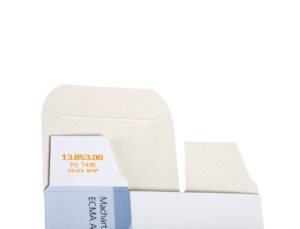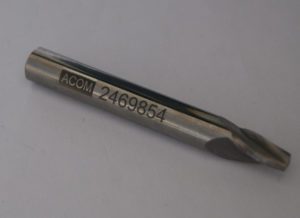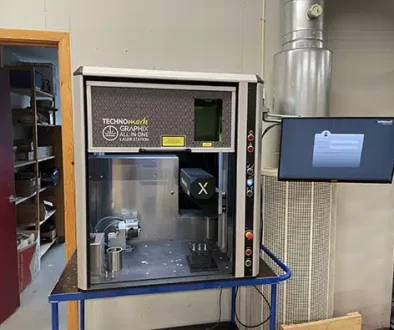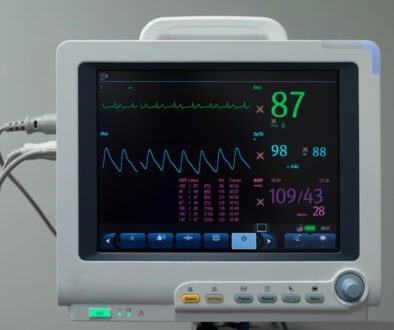Marking Machines: Are They The Best Method For Your Materials?
Whereas a precision machinist might select a material specification based on the intended use of the end product, technology selection for part marking works the other way around:
The material type determines the marking machine, if needed; the marking method doesn’t determine the material type.
We’ll break down which part marking methods work best with various material types so you can decide which industrial traceability solution is best for you.
The Material Determines the Part Marking Method
The material specification of your components will determine which direct part marking methods are best for your product application — it’s that simple.
To avoid undue costs, identify what kinds of materials you’ll need to mark before purchasing a traceability solution.
A convenient way to distinguish between different material types is to group them into two broad categories: organic and non-organic.
Organic Materials

Organic materials are fairly easy to identify, we are surrounded by them in our everyday life. Organic materials are naturally occurring compounds or products made from naturally occurring compounds that break down over time.
Think of materials like:
- Wood
- Leather
- Paper
- Corkboard
- Concrete
- Rubber/Elastomer
- Glass
Marking on these materials can be tricky because their compositions don’t react well to direct marking techniques such as dot peen. The dot peen marking process produces a mark by displacing material at the part surface using a tool such as a carbide tip stylus. For organic compounds, this process tends to deform the material surface.
Non-contact methods such as laser marking are better for marking organic materials. In particular, carbon dioxide (CO2) lasers are well-suited for marking organic compounds, leaving an impression on the material through ablation (material removal) or a color change at the material surface. But laser marking has its limitations when it comes to flammable organic compounds, such as paper or corkboard.
Inkjet printing is a viable option for marking organic materials for high-volume, high-speed production lines. Inkjet relies on the absorption of ink into the substrate, so it works well on wood, cardboard, paper, and corkboard. Inkjet marking is widely used in automated pharmaceutical and consumer goods packaging lines.
Non-Organic Materials

Everything that’s not classified as an organic material is probably a non-organic material – for example, processed materials such as plastic resins and steel alloys.
For manufacturers, this means materials like
- Steel
- Titanium
- Aluminum
- Nickel alloys
- Iron
- Powder metal
- Brass
- Copper
- Polymers
As with organic materials, many manufacturers rely on laser marking machines for the permanent identification of non-organic materials. Laser energy is focused on the material surface to achieve an indelible, high-quality mark through a process of etching, ablation, or annealing. When it comes to laser marking plastic, the laser can also produce a color change on many plastic resins through a process called foaming.
Dot peen is also a very useful traceability solution for both ferrous and non-ferrous metals. Dot peen uses a carbide tip stylus to strike the material surface, forming a permanent mark through a series of cold-formed, stamped dots. Because the marking is achieved through material displacement and not material removal, the dot peen process is considered a low-stress marking method. Dot peen marking is widely used in oil & gas and aerospace industries.
Here’s a handy chart to keep track of what traceability methods work with what materials.
| Materials | Laser Marking | Dot Peen Marking | Impact Press |
Steel | X | X | X |
Aluminum | X | X | X |
Iron | X | X | X |
Titanium | X | ||
Nickel Alloys | X | X | X |
| Glass | X | ||
Rubber/Elastomer | X | X | |
Plastics | X | X | |
Wood | X | X | |
| Concrete | X | ||
| Leather | X | X |
The Right Part Marking Method for the Right Material
There are many considerations when selecting the best part marking technology for your manufacturing process.
As long as you know what kind of materials you’ll need permanent identification for, choosing the right part marking method shouldn’t be a big challenge.
Not sure where to begin with finding a solution? Material type is just one consideration for selecting the best marking method. Our team is available any time to consult on the best versatile laser marking application for you.
Additional Reading:
Manufacturing Traceability Solutions: What Are The Options?
(Editor’s Note: This blog was originally published in April 2021 and was updated in September 2022 to reflect current information.)
Laser Marking Downloadable Form
"*" indicates required fields



